Nature Based Solutions: Can Nature Sequester Our Excess Carbon Dioxide?
6 minute read
Updated on: 29 Aug 2021
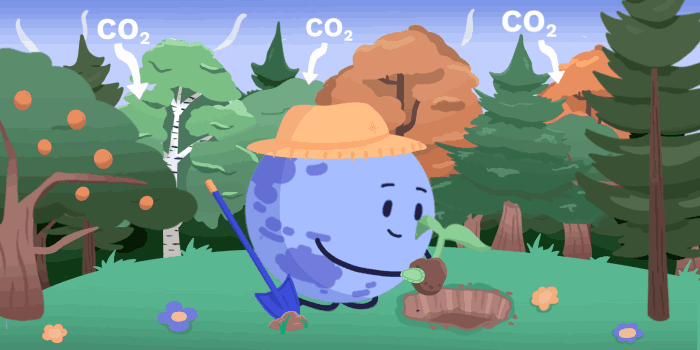
All life on Earth needs carbon . It flows between rocks, oceans, the atmosphere, soils, and every living thing in a continuous cycle known as the carbon cycle
.
Some parts of the cycle release more carbon than they absorb and are known as carbon sources . Other parts absorb more than they release and are called carbon sinks
.
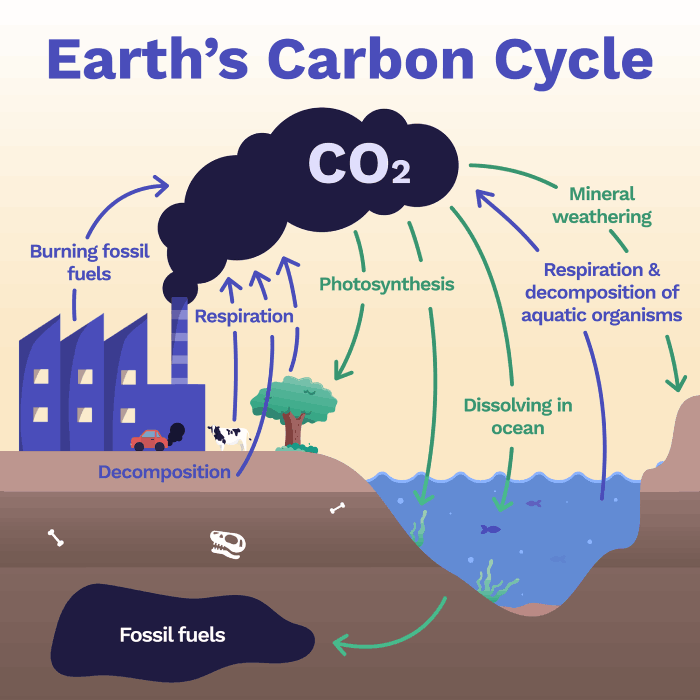
The Carbon Cycle
Human activities have upset this balance, adding more carbon to the atmosphere, causing global warming . What if we could rebalance this cycle by using natural carbon sinks?
Let’s look at these in more detail.
Can planting trees stop climate change?
Trees take in carbon dioxide through photosynthesis, where plants use energy from the sun, water, and CO₂ to make food . Some of this is released back into the atmosphere through respiration (the process used by living things to get energy from their food), but the rest builds up in the tree’s leaves, trunk, and roots
.

Photosynthesis at work!
Every year, trees capture about 2.4 GtCO₂ from the atmosphere - that’s about 6% of our total CO₂ emissions
! Therefore, in theory, we could absorb more CO₂ from the atmosphere by just planting more trees
!
Planting trees can be good for other things too:
- Protecting soil from erosion and helping soil hold more nutrients and water
- Providing protection from flooding
- Reducing heatwaves through evaporative cooling (a cooling effect when water evaporates from leaves)
So why don’t we just plant loads of trees everywhere? Well, there are other things we need to think about :
- What types of trees
- How much carbon could be stored in total
- Where the trees are planted
Planting just one type of tree over a big area can be really damaging to wildlife . Therefore, it’s important to plant a variety of species, like in natural forests
.
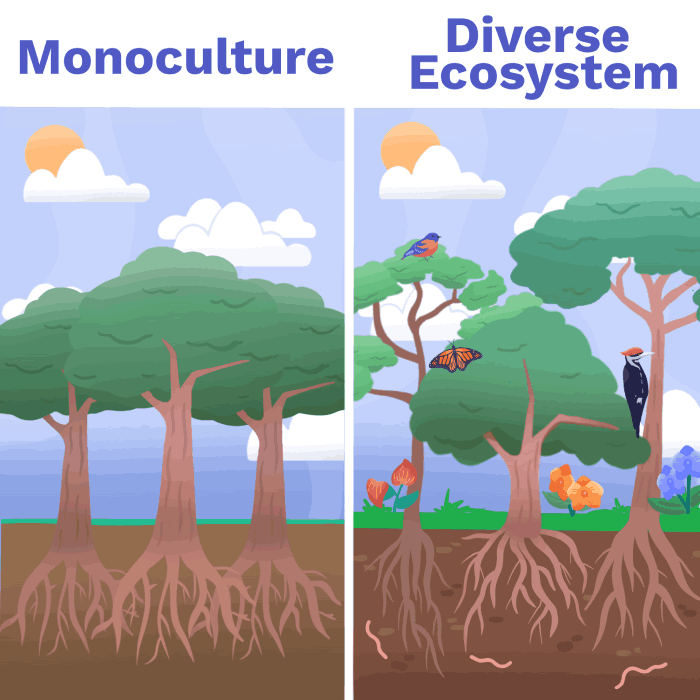
Monocultures vs biodiversity
Even if we planted the right types of trees, how much carbon could they store in total? Forests become saturated with carbon after a few decades or centuries (meaning they can’t absorb any more) . This happens because eventually when trees die, they release a lot of their stored carbon back into the atmosphere
. Realistic maximum estimates think that only around a tenth of current emissions per year can be stored by planting trees
.
Planting trees also requires a lot of land , which could cause competition over land for agriculture, threatening future food security
.
But what if we could use carbon sinks to improve food security?
The carbon store beneath our feet
The top 2 metres of soil globally contain the equivalent of about 8,800 GtCO₂.
However, soils worldwide are eroding (wearing away) over 10-40 times faster than they are being formed !
Farming is a key driver of erosion, mainly due to soils being disturbed due to certain farming methods .
Healthy soils can store more carbon, so protecting them is key to stopping climate change
. What’s more, healthier soils also help crop growth, increasing food production
!
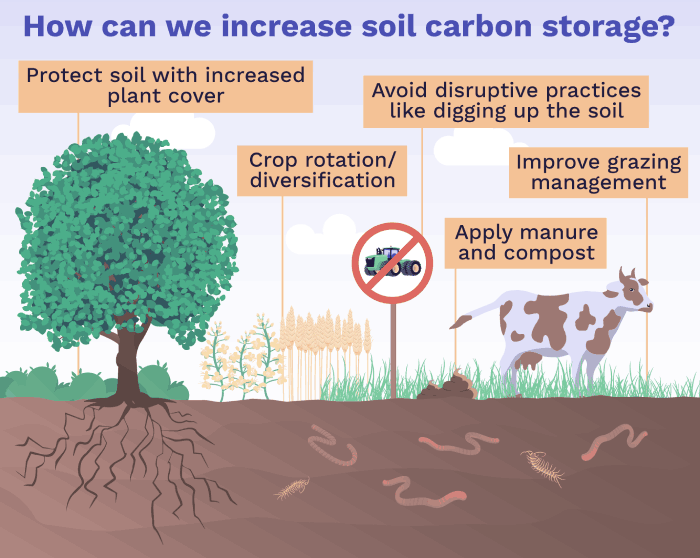
Sustainable land management
We can also increase soil carbon stores by spreading charcoal (made from heating plants using very little oxygen) over the soil surface. The carbon in the charcoal stays locked up for at least a century if not disturbed!
Disturbance is a problem though: this process is reversible, and stored carbon may be re-released into the atmosphere if land management changes .
So far, we have looked at land-based carbon sinks, but what’s happening out at sea?
What is blue carbon?
Blue carbon is the organic carbon captured and stored by the world’s coastal and ocean ecosystems .
These ecosystems store more carbon over the long term per unit area than land-based forests and have other benefits too :
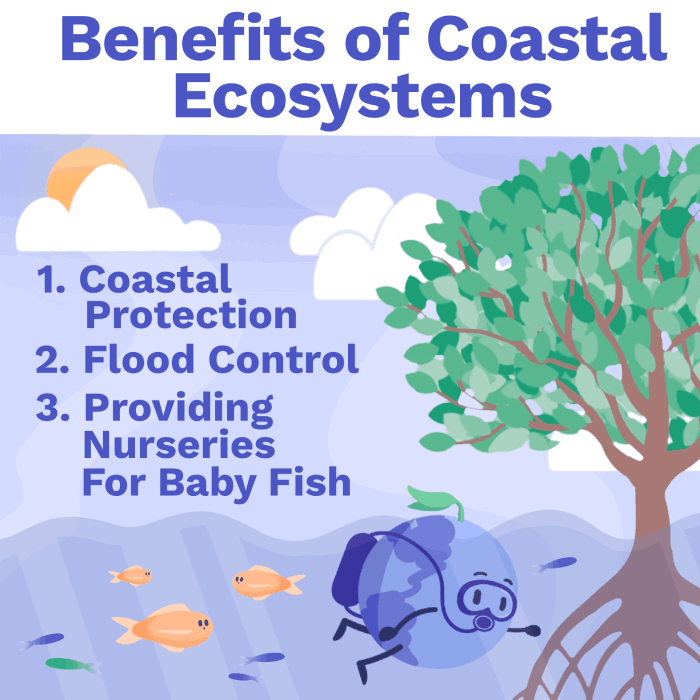
Coastal ecosystems do much more than just absorb carbon
However, we’re still not sure how exactly much carbon these ecosystems are really able to absorb .
Conclusion
Nature-based carbon removal is usually fairly cheap and can provide many other ecosystem benefits. However, there is a limit to how much carbon these systems can absorb, as well as the risk that the stored carbon will be re-released into the atmosphere. With these limitations in mind, let’s look at how modern technology could help us remove more carbon dioxide.
Next Chapter